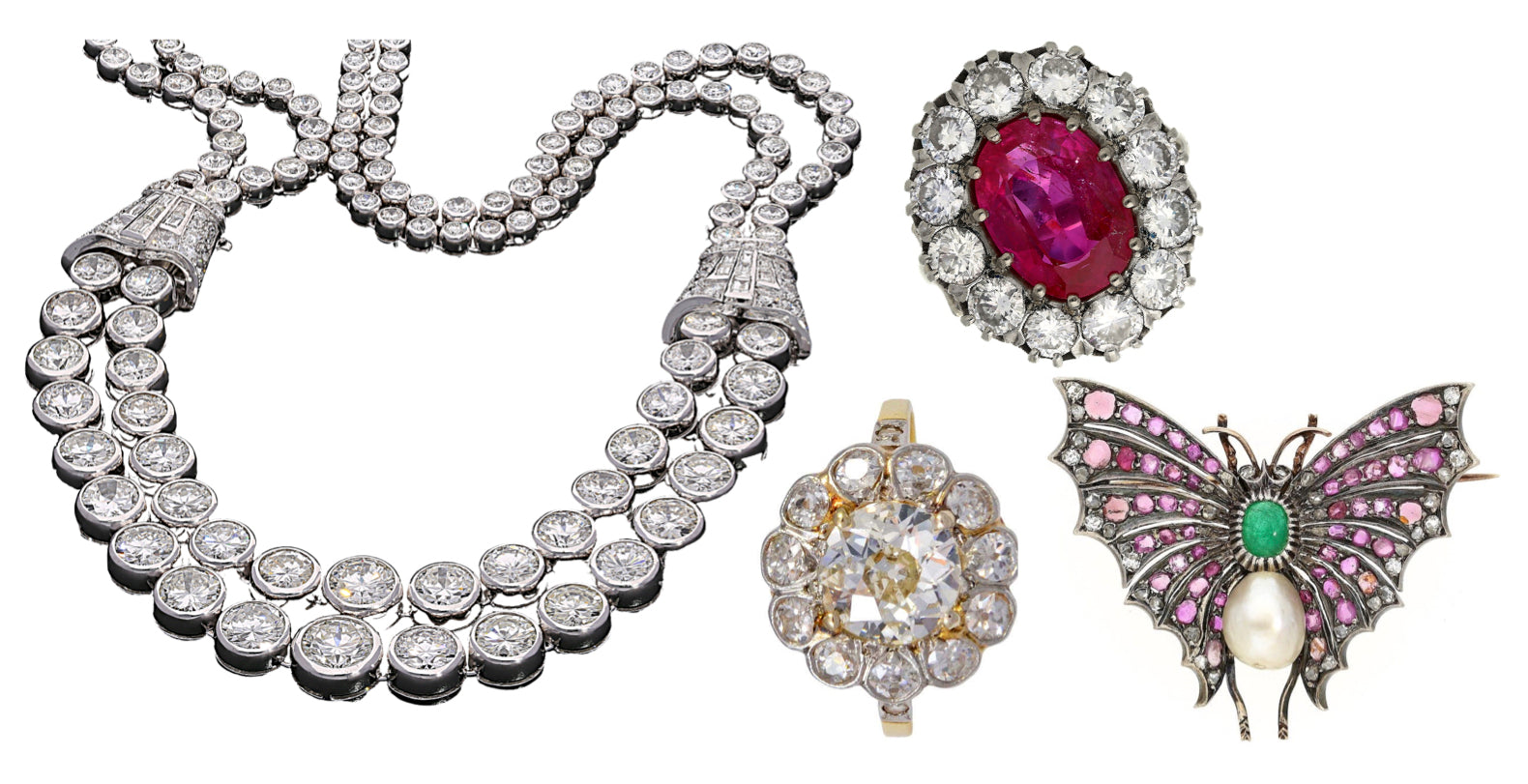Victorian Era (1837-1901)
The Victorian Era is one of the preeminent periods of antique jewelry lore
The Victorian Era is one of the preeminent periods of antique jewelry lore
This era was known early on for its light-colored gold jewelry with pearls, amongst other gemstones. Flowers, animals, and other nature-based motifs were abundant. This was the preeminent jewelry style in European culture until her husband, Prince Albert, passed away in 1961.
This led a change in Queen Victoria’s style to a mourner’s black, as gothic jewelry became the prominent style. Gold would be plated with black enamel and stones such as black diamonds and onyx became mainstream.
One of the longest eras of antique European jewelry, the eponymously-named period is among the most revered by collectors and historians alike.
During the Victorian Era, the jewelry landscape was defined by three main subcategories: the Romantic Period, the Grand Period, and the Aesthetic Period Each of these periods boasted distinctive key features, encompassing varied sources of inspiration, the use of different materials, and the prominence of specific types of jewelry. This diversity in styles and influences contributed to the rich tapestry of Victorian jewelry design, leaving a lasting impact on the world of adornment.
Spanning from 1837-1861, this period featured softer delicate patterns, with the prominent use of gold as the main metal. Brooches and hair jewelry were quite popular as well.

Spanning from 1861-1885. This period saw a shift from delicate to bold designs, mirroring evolving social roles and female representation. Imitations and costume jewelry arose, as women demanded to study, vote and have financial autonomy. Common motifs involved naturalistic elements such as as dragonflies, butterflies, and beetles.
Spanning from 1885-1901. As women became more prominent in the workforce, this saw a decline in the purchases of fine jewelry for daily wear.
As their roles expanded and activities diversified, the need for more practical and versatile adornments became evident. Consequently, the era of large Victorian jewelry gradually gave way to the emergence of smaller and more adaptable Edwardian pieces, perfectly suited to accommodate the changing times and the dynamic lives of these empowered women. Pieces with a lower elevation, smaller profile, and more subtle gemstones became popular.
